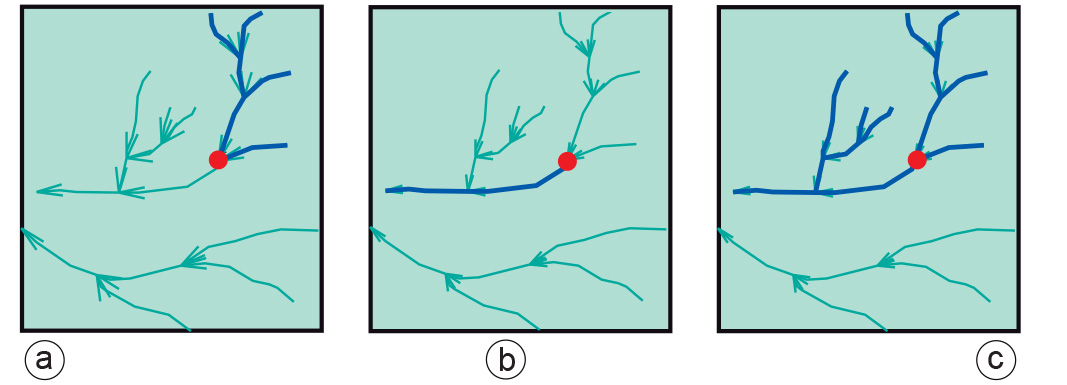Trace analysis
Introduction
Trace analysis is performed when we want to understand which part of a network is “conditionally connected” to a chosen node on the network, which is known as the “trace origin”. If a node or line is conditionally connected, this means that a path exists from the node/line to the trace origin, and that the connecting path fulfills the conditions set. What these conditions are depends on the application; they may involve the direction of the path, its capacity, its length, or resource consumption along it. The condition is typically a logical expression, as we have seen before:
-
the path must be directed from the node/line to the trace origin;
-
its capacity (defined as the minimum capacity of the lines that constitute the path) must be above a given threshold; and
-
the path’s length must not exceed a given maximum length.
Tracing is the computation that the GIS performs to find the paths from the trace origin that obey the tracing conditions. It is a rather useful function for many network-related problems.
Examples
In Figure below the trace origin is indicated in red. In part (a), tracing conditions were set to trace all the way upstream; part (b) traces all the way downstream; and in part (c) there were no conditions set for the direction of the path, thereby tracing all connected lines from the trace origin. More complex conditions are certainly possible in tracing.

Learning outcomes
-
11 - Spatial analysis: classes of functions
Classify and explain spatial analysis functions (measurements, classification, overlay, neighbourhood and connectivity) in a raster and vector environment (level 1 and 2).
-
12 - Spatial analysis: network analysis
Student is able to explain network analysis and the associated concepts (level 1, 2).
Prior knowledge
Outgoing relations
- Trace analysis is a kind of Network Partitioning